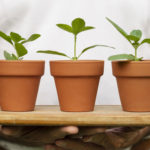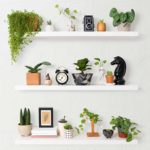Proper Lighting: Secret to Robust Houseplants
We’ve all tried growing houseplants in less-than-ideal lighting conditions. At first, the plant looks great and we pat ourselves on the back. But inevitably, it begins to lose leaves and look sickly. If it’s truly starved for light, the plant will eventually die.
Proper Lighting is Critical to Indoor Plant Health
Nurseries might go out of business if more indoor gardeners understood just how important proper lighting is to houseplants.
Unlike humans and animals, plants make most of their own food. Light triggers and energizes the process of photosynthesis, which produces carbohydrates that fuel plant growth.
Without sufficient light:
- Plants can’t photosynthesize effectively.
- They rely on stored energy to survive.
- Over time, they deplete these reserves and begin to cannibalize themselves.
- Eventually, they starve to death.
While some plants will die in poor lighting, others may survive but only just. These are the ones you see with:
- Weak, stunted growth
- Sparse foliage
- No flowers
- Ongoing pest and disease issues
Use Full-Spectrum Lighting for Your Indoor Garden
Good news! There’s an easy and affordable way to replicate natural sunlight indoors:
👉 Full-spectrum lighting.
Originally used to treat Seasonal Affective Disorder (SAD), full-spectrum lights simulate the brightness of the midday sun—and plants thrive under them.
You can even find inexpensive screw-in bulbs designed for standard light fixtures. Simply replace nearby bulbs with
full-spectrum light bulbs like these,
and voilà—your houseplants are basking in the next-best-thing to real sunlight.
Don’t Want to Bother with Indoor Plant Lighting?
No problem! Choose plants that naturally tolerate low light conditions. Here are some great options:
- Arrowhead Vine
- Cast-Iron Plant
- Chinese Evergreen
- Dracaena
- Peace Lily
- Pothos
- Philodendron
- Radiator Plant
- Snake Plant
While your eyes can help you estimate how bright or dim your home is, for the most accurate results, consider using a light meter to measure light levels precisely.





